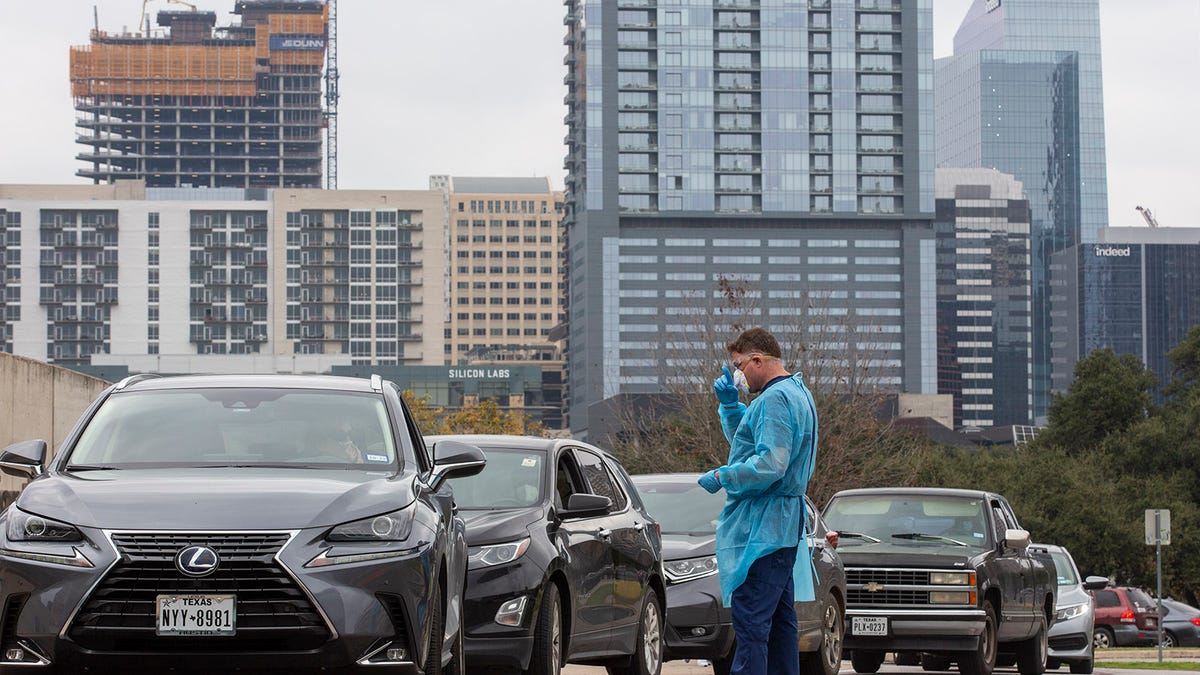The state health department has run out of a key treatment to fight the omicron COVID-19 variant, which now makes up 90% of the virus cases in Texas.
On Monday, the Texas Department of State Health Services announced that its regional infusion centers in Austin, El Paso, Fort Worth, San Antonio and The Woodlands have run out of the monoclonal antibody sotrovimab.
That antibody has been shown to be effective against the omicron variant. Other monoclonal antibodies have not been shown to be effective against omicron.
The state does not expect to receive another shipment of sotrovimab from the federal government until January.
People who had an appointment scheduled at regional infusion centers for this treatment will be alerted. People who have been diagnosed with a non-omicron variant can receive other monoclonal antibody treatments at the regional infusion centers.

Last week the Food and Drug Administration gave emergency use authorization for two new oral antiviral drugs, the Pfizer COVID-19 pill and the Merck COVID-19 pill. The state expects that those will be available soon but in a limited supply from the federal government.
Without these three early response treatments to COVID-19 available, the state is recommending that people take precautions against getting COVID-19, including getting a booster shot as soon as possible. Wearing a mask, avoiding gatherings, social distancing and hand washing are also recommended by the Centers for Disease Control and Prevention.
Testing for variants:Austin Regional Clinic testing COVID-19 vaccine designed to target variants
How is omicron affecting Austin?
Based on coronavirus data and hospital trends for COVID-19 released Monday, health officials are keeping the community threat level at Stage 3 for Austin Public Health’s risk-based guidelines.
The rolling seven-day average of new daily hospital admissions, which helps Austin Public Health determine guidelines for the most medically vulnerable members of the community, was 28.
The county’s highest average for new daily hospital admissions during the summer surge was 84 on Aug. 11, when the community was in Stage 5, the highest threat level.
The average stayed below 50 for several days near the end of September, so Austin Public Health on Sept. 28 moved the region to Stage 4 of its pandemic guidelines, indicating less danger of community spread.
More:Key COVID indicator, Austin’s average number of daily hospital admissions, jumps from 16 to 28
The average then needed to stay below 30 for an extended period before Austin Public Health considered downgrading the threat level to Stage 3. But health officials made the shift to Stage 3 on Oct. 12.
Although Austin and Travis County’s seven-day average for new daily hospital admissions has stayed below 14 — Stage 2 territory — for more than a week, the area is still in Stage 3 because health leaders are using another key indicator to better determine the risk-based guidelines: the community transmission rate.
Dr. Desmar Walkes, Austin-Travis County health authority, has said that the transmission rate appeared to be more accurate in determining the threat level than the daily hospital average when it came to the delta variant.
The community transmission rate, which tracks new cases per 100,000 people over seven days, was 173.5 Monday. Stage 3 territory is when the rate is between 10 and 49.
Omicron in Austin:What we now know about the omicron variant as Austin braces for COVID-19 holiday surge
On Monday, Austin Public Health was tracking 176 people in the hospital with COVID-19, compared with the pandemic record high of 653 patients Aug. 25.
Only 51 people were in Austin-area ICUs for COVID-19. That number hit a pandemic record high of 237 on Aug. 22. The 23 patients on ventilators remained a significant improvement over the pandemic record high of 174 set Aug. 29.
Austin Public Health and Travis County health officials reported:
• 2,503 active COVID-19 cases.
• 1,214 total deaths from COVID-19 over the course of the pandemic.
• 469 new cases.
• A positivity rate of 8.9% for COVID-19 tests.
According to state data, Travis County vaccination rates continue to improve. As of Monday, 80.49% of Travis County residents 5 and older have received at least one dose of vaccine and 69.78% of county residents 5 and older are fully vaccinated.
